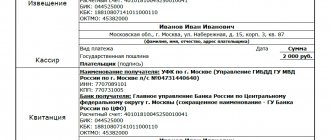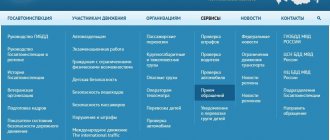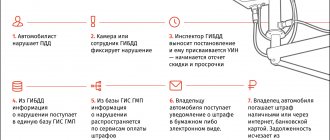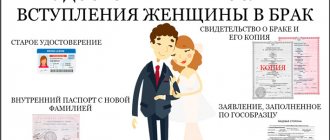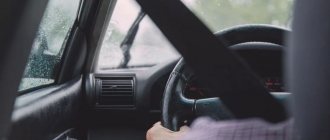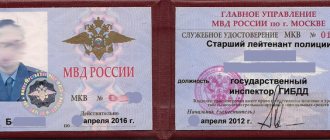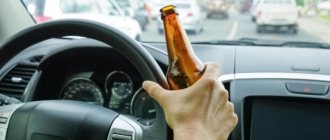Did you send the resolution without a photo? It is illegal!
...In the vast majority of cases and from a formal point of view. Let's explain in more detail!
The fact is that the Code of Administrative Offenses stipulates that all materials from auto-recording cameras must be sent to the driver along with a copy of the resolution. And these materials include photographic and video evidence, and within fairly strict limits.
Let us explain the sequence of such judgments at the official legislative level.
- Article 26.8 of the Code prescribes that all materials of the case are reflected in the decision - photographs are among such materials,
- Article 28.6 establishes that the traffic police fine, along with the case materials, must also be sent to the driver who committed the fine, but it can also be sent via the Internet if he is registered with the State Services and has given consent. As a result, the photo is again required in the resolution.
- GOST R 57144-2016, which regulates the operation of automatic fixation devices, says that a photograph is required (clause 6.5.1).
It would seem that everything is extremely clear. In particular, a violation of the imposition of punishment may occur in cases of the following violations:
- penalties for incorrect parking (including from MADI) - in this situation, if you receive fines without a photo, this is especially true when appealing
- for speeding - what to do with such a fine, we will explain below,
- for stop lines, traffic lights, insurance and other traffic violations.
But the absence of photographic material is not always illegal! The fact is that we are interested in the practical side of the answer, what to do if you receive a fine without a photo from an auto-fixing camera.
But from a practical point of view, we first need to discard false information about such a fine, which becomes such until it reaches us. Simply put, it often happens that a photograph is simply lost during the reporting process.
If there is no photographic material when checking online
And the solution to the question of what to do when receiving a fine from a camera without a photo in the vast majority of cases is found here.
A common situation during verification is that there are photographic materials on file against you, but you simply do not see them, because the photos are not displayed in the service for checking fines. Or it may be that there is no fine at all, but more on that below.
On State Services
Here, all fines when searching both by car license plate and driver’s license are displayed without photos very often. Instead, the official website of the State Administration suggests that you familiarize yourself with the details on the traffic police website.
In applications and on unofficial sites
If you check for fines on various services and smartphone applications, there is also a high probability that the decision will be displayed without a photo.
And the reason for this is simple - the developers did not technically implement the ability to pull photos from the database provided by the traffic police.
If you check your debts to the state not on the official websites and services of the traffic police, then you haven’t even received a fine without a photo yet. It is necessary to be guided by the legal requirements for notifying drivers of decisions made against them.
On the official website of the traffic police
But here the punishment will most likely be displayed with the available photographic materials. And if you think that you received a fine without a photo, viewing it through the State Traffic Inspectorate service, then there is reason to think about it.
But in the vast majority of cases, on the traffic police website you will be shown information that the request for photographic materials is not available - no one will directly write that the photo is simply missing.
I received a letter with a fine without a photo: is it possible not to pay it?
If a motorist violated traffic rules, and his illegal actions were captured by automatic photo and video recording devices, then the relevant data will be transmitted electronically to the traffic police inspector, who must analyze the received images and make a decision on the imposition of punishment.
Thus, the traffic police can fine the driver without even informing him (without summoning him to the police department with a subpoena). The motorist will learn about the violation directly from the corresponding letter, after receiving which he will have 10 days to pay the fine or the opportunity to challenge it.
Availability of photographs in the “letter of happiness”
Photo ptoday.ru
According to Part 3 of Article 28.6 of the Code of Administrative Offenses of the Russian Federation, the envelope with the “letter of happiness” must contain not only the relevant resolution, but also evidence of the violation committed by the driver, that is, photographs taken with an automatic camera.
Most often, the latter are printed on plain paper. The quality of the images sometimes raises many questions, but in most cases they are quite enough for the motorist to be convinced that it was his car that was captured on the video camera lenses.
What to do if there are no photos in the letter?
Photo govermentpolit.ru
Sometimes car owners receive “chain letters” that contain only receipts for paying a fine, but there are no photographs from the scene of the violation. The question immediately arises: how legal are such fines and do they need to be paid?
Note that recording administrative offenses is carried out not only by photo and video cameras installed on the roads. If the driver parks incorrectly, the traffic police inspector who notices this can personally photograph the car, and then, based on the photographs he has, draw up a corresponding protocol with a fine.
Photo astana1life.com
In such cases, a fine can again be imposed without notifying the violating motorist, that is, the policeman is not obliged to call the violator to the carpet. However, the “police officer” must notify the driver in advance about the place and time of consideration of the protocol.
How exactly he will do this is, unfortunately, not spelled out in the law. Most often, such summonses arrive by mail, although sometimes police officers also use regular SMS messages to notify drivers. If you received a “chain letter” without photos and are sure that you have not received any notifications either by email or by phone, then there is no need to rush to pay a suspicious fine.
How can I find out if there are fines?
► Subscribe to our channel on Telegram
First of all, you should go to the State Services portal or the official website of the State Traffic Safety Inspectorate, where every car owner can find out whether there are unpaid fines on his account. If such things really take place, then the received letter should also contain photographs of the moment of the violation.
Their absence indicates that the traffic police inspector most likely simply forgot to put them in the envelope. Such an omission is considered a gross violation of the law and is fraught with disciplinary punishment for the police officer.
Photo shtrafy-gibdd.ru
In this case, the driver can try to challenge the fine, and this is done according to the standard procedure. Within 10 days, his claim will first be considered by the traffic police, and if the driver is not satisfied with the inspector’s response, the case will be sent to court. Note that if the offense really took place, then with a high degree of probability the “servant of Themis” will also leave the fine in force, but will additionally punish the inspector who made a mistake.
Fake chain letters
If there are no notifications about the presence of unpaid fines either on the State Services or on the traffic police website, then the letter that comes into your hands is not official. Most likely, ordinary scammers planted it in the driver’s mailbox, betting that the person would “spit” on the lack of photos and pay a fake fine without delving into the details.
However, the most cunning attackers sometimes even go to the trouble of attaching real photographs to fake letters. To do this, they arm themselves with a regular photo or video camera and stand somewhere on a busy road, trying to take as many photographs of passing cars as possible.
They then find the drivers of these cars based on their registration plates and mass send them fake “chain letters” with photos attached. It is not difficult to distinguish fake receipts from real ones, since in most cases scammers offer to “pay fines” to electronic wallets via the Internet, so motorists only need to be attentive - and then all the efforts of the scammers will be in vain.
I received an official letter, but no photo - is it legal?
It is the mailing of a copy of the resolution, which comes to you by registered mail (in practice, often simple - to the mailbox) that is the official notification of the new fine.
But let’s be honest: if you received a resolution from a camera in an official paper letter without photographs, then this is a very rare situation. Make sure once again that this is indeed a decree on auto-fixation, and not a regular one sent to you by mail, issued in the traffic police office, or that this is not a protocol at all. And the photo in the fine from the camera is required by law.
Let us once again explain the logical chain of legislation for 2021.
All decisions sent to the driver regarding automatic fixation must necessarily include materials obtained using this method.
Code of Administrative Offenses of the Russian Federation Article 28.6.
Copies of the resolution in the case of an administrative offense and materials obtained using special technical means operating automatically are sent to the person against whom the case of an administrative offense has been initiated by registered mail in the form of a copy of the resolution on paper...
The fact that such indications must contain a photo is already indicated in GOST R 57144-2016 “Special technical means operating in automatic mode. General technical requirements".
For speeding, running red lights, stop lines and other immediate violations of the Rules, the following rule applies:
At least 2 consecutive photographic images of a vehicle in the control zone with an interval of at least 0.1 s, which record the moments of the commission of an administrative offense by the driver of this vehicle, with a fully recognized state registration plate.
For parking violations:
A photograph showing a vehicle stopped in a place where parking or stopping is prohibited.
A photograph showing a vehicle stopped in a place where parking is prohibited, more than 5 minutes after the first detection or the time interval indicated on road sign 8.9, but not more than 1 day.
But there is an important subtlety - the GOST indicated and cited above is not binding, but only advisory. But this changes practically nothing - the instructions for each device contain similar instructions, and they must be followed when installing cameras.
What is MADI
In recent years, quite a lot of organizations have appeared in the capital to exercise control over motorists’ compliance with traffic rules on the roads. One of the “youngest” subordinate institutions is MADI. This body carries out its functions on the basis of the Code of Administrative Offenses (Administrative Offenses Code of the Russian Federation and the City of Moscow). The powers of MADI are enshrined in special Government Decree No. 679-PP.
Authority
In large cities like Moscow, the issue of parking and parking spaces is especially acute. Many motorists leave their vehicles in unauthorized places, thereby violating the established rules. The main responsibility of the inspectorate is to identify such violations and bring the perpetrators to justice.
Street patrols are carried out to identify administrative offenses. Each inspector is given a specific area under control. If illegal actions on the part of drivers are detected, all necessary measures are taken to eliminate them. For example, we may be talking about calling a special service to evacuate a car parked in the wrong place.
It is important to know! As a rule, the inspector video records violations, after which a protocol is drawn up. The information is automatically transferred to the MADI server.
The powers of traffic police and MADI employees are strictly delineated. Thus, the state inspection has the right to hold people accountable for any offenses in the field of road traffic. MADI imposes fines for violating the requirements regarding the “stop” and “no parking” rules. Here we are talking about leaving a car on the sidewalk, grass (lawn), curb, zebra crossings and places where “parking is prohibited” signs are located.
What to do?
If you have not yet received an official copy of the resolution, and you saw a traffic police fine without a photo on any service, then you need to wait for the paper letter.
If the paper copy does not contain photographic materials, then it is illegal. But, as we indicated above, there were practically no such cases.
In the latter case, the fine is subject to appeal. But at the same time, formally request photographic materials from TsAFAP, MADI or another body that issued this decision. Perhaps you will receive an answer that there are none. Or they will send you materials, and then there will be no point in challenging the fine.
In any case, before responding to your request, file a complaint against the decision, since while waiting for a response you may miss the appeal period, which on May 24, 2021 is only 10 days from the date of receipt of a copy of the decision.
The grounds for appeal are exactly the same as those indicated above in the form of references to legislation, and the sequence of arguments in the complaint should be as follows:
- photographic material is required, according to the instructions for the measuring instrument (it is highly advisable to find such instructions on the Internet and quote the paragraph on the availability of photos) and according to paragraph 5.6.1 of GOST R 57144-2016,
- the materials must be sent to the person in respect of whom the decision was made, on the basis of Article 28.6 of the Code of Administrative Offences,
- evidence of an offense, based on the above, was obtained illegally, and within the meaning of Part 3 of Article 26.2 of the Code, such evidence cannot be used,
- Part 2 of Article 1.5 indicates that a person is considered innocent until his guilt is proven in the manner prescribed by law.
Arbitrage practice
But the point is also that the judge can evaluate evidence based on personal beliefs, giving it a certain weight subjectively. And if, for example, the decree with a fine does not contain only a photo, but contains an address with the coordinates of the offense and other data, then the complaint may be refused.
However, in judicial practice, neither in 2021 nor previously, there have been cases of attempting to challenge a fine that does not contain a photo of the car. There are only decisions and resolutions with low-quality photographs or unrecognized vehicle license plates on them.
For example, in one of the decisions of the Kostroma court, the person considering the case did not take into account the fact that the Cordon auto-fixation tool provided for 2 photos, but only one was taken.
Important note!
- This article provides basic information, but each case is different.
- In 92% of all situations there are important nuances that can affect the outcome of the entire case.
- An experienced lawyer will study all the materials of the case and indicate in which direction to move.
Therefore, our website employs on-duty legal consultants who delve into each case and are aimed at solving it.
Ask a Question
or consult toll-free (Moscow), (St. Petersburg), 8 (all of Russia).
Why can orders come without photos?
But let’s point out the most important thing – fraudulent letters. Their practice is only gaining momentum in 2021, but the essence is this: under the guise of a regular traffic police fine, you receive a letter that is very similar to the official one, but with payment details that differ from the traffic police. Thus, the attacker hopes that you will not carefully read the letter and simply pay using the specified details.
Needless to say, there cannot be a photo of the violation in such a letter!
The second option is if you received a fine based on photographs of citizens with an active position - that is, someone complained about you. In such cases, photos of violations are rarely sent. But the decision itself was not made using a self-recording camera, but in an “office” way - simply based on a complaint with photographic evidence. An example of such a fine is the “People's Inspector” application. Here is an example of a fine issued with its help:
By the way, such fines can also be appealed very easily - in the complaint you indicate that you were not driving the car and do not indicate who was, referring to the articles of the Constitution of the Russian Federation. Thus, the fine against you should be canceled, and the lack of a photo does not play any role here.
Options for quickly obtaining information about fines
You can find out all the information you need about fines by using specially designed online services. The search for the necessary information is carried out taking into account the link to the vehicle data.
Public services
You can use the portal only after registration and authorization. After this, the driver gets access to all services of the portal. The necessary information will be found using the vehicle data and the receipt number.
On the portal you will need:
- go to the “Transport and Driving” section and select the “Fines” item;
- In the fields of the questionnaire, enter the user's full name, license number, car number, certificate of state registration of the vehicle;
- Click “Search for fines”, where a table will appear containing information about existing penalties, the amount and terms of payment.
If no traffic rules were violated, the portal will display the message “No fines found.” In order to receive timely notification of traffic police fines while on the portal, you should select the appropriate section and enter a valid mobile phone number.
Moscow portal
Information using the service is available only to drivers driving vehicles on the roads of the capital. To obtain the necessary information you will need:
- go to the main page of the site;
- select the login option using your SNILS number;
- in the fields provided for filling out, enter the same data as on the State Services portal;
- in the “Setting up notifications” section, check the box indicating that the user wants to receive information about fines and click “save”.
After completing simple manipulations, you can quickly and conveniently receive notifications of traffic police fines by email or SMS for free.
Yandex money
To check, you must log in to your service account. To do this, the following algorithm of actions is used:
- enter your username and password to log in;
- in the goods and services section you need to go to the “Fines” menu;
- fill in information about the license number and STS;
- If there are penalties, go to the payment section.
It is important to know! The service also allows you to connect to receive SMS notifications about traffic police fines.
Mobile applications
For the convenience of vehicle owners, a large number of different applications have been developed that allow them to find out information about existing fines for traffic violations through mobile communication devices. Among the most common programs are:
- The “Traffic Police Fines” application with photo recording for the phone allows you to obtain information from official federal databases. The user has the opportunity to see photos from the automatic registration camera.
- Rosfine - uses data from the State Services portal, the road inspection database and the capital's DIT. You can check the information by STS number or license number, car registration plate.
- “Your traffic police” - take information from the official inspection database. You can check whether you have a debt using your car number. There is a function for obtaining data about the restrictions imposed on the car.
These services promptly inform users about the need to pay new fines. All information comes in the form of messages by e-mail or via SMS notification.
You can get acquainted with the full functionality of the services by downloading them to your phone or by opening the desired program from a personal computer. There is no need to specially configure the applications; all adjustments are made in your registered personal account.

